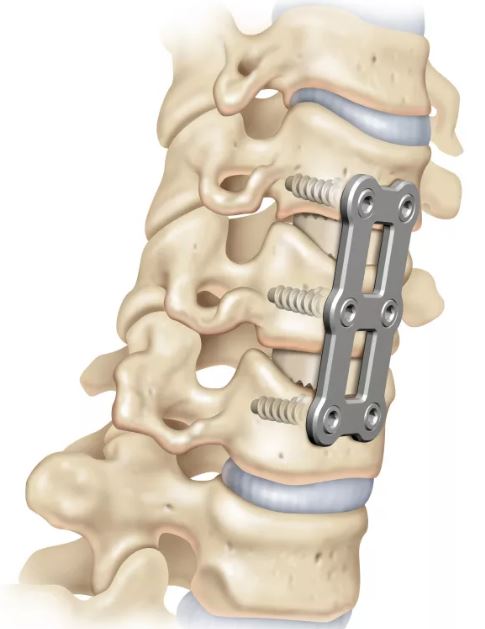Cervical

Cervical Spine Surgery
Cervical spine surgery refers to surgical procedures performed on the cervical spine, which is the upper portion of the spine located in the neck. This area consists of seven vertebrae (C1-C7) that play a crucial role in supporting the head, protecting the spinal cord, and facilitating various movements of the neck. Cervical spine surgery is typically considered when conservative treatments, such as physical therapy or medications, fail to alleviate symptoms caused by spinal conditions.
Get in touch
Cervical Spine Surgery

ACDF

Corpectomy & Stabilisation
ACDF

Anterior Cervical Discectomy and Fusion (ACDF) is a surgical procedure performed to address certain cervical spine conditions, particularly disc herniation or degeneration. The procedure involves removing a problematic disc in the neck and fusing adjacent vertebrae to stabilize the spine. ACDF is commonly used to alleviate pain, weakness, or numbness caused by pressure on the spinal cord or nerve roots.
Benefits:
Pain Relief: ACDF is effective in relieving pain associated with disc herniation, degeneration, or nerve compression in the cervical spine.
Neurological Improvement: The procedure can improve symptoms such as weakness, numbness, or tingling caused by pressure on the spinal cord or nerve roots.
Stabilization: Fusion of vertebrae stabilizes the spine, preventing abnormal movement between adjacent vertebrae.
Restoration of Disc Height: By removing the damaged disc and placing a bone graft, ACDF aims to restore the natural height between vertebrae.
Improved Spinal Alignment: The procedure can correct spinal misalignment caused by disc-related issues.
ACDF is a well-established surgical option for specific cervical spine conditions, and its success depends on various factors, including the patient’s overall health and the severity of the spinal condition. As with any surgical procedure, potential risks and benefits should be thoroughly discussed with the healthcare provider.
Corpectomy & Stabilisation
Corpectomy is a surgical procedure that involves the removal of a vertebral body in the spine, usually to address conditions such as tumors, fractures, or degenerative disc disease that affect the vertebral column. After corpectomy, stabilization procedures are often performed to maintain spinal alignment and prevent instability. This may involve the use of spinal instrumentation and fusion techniques.
Benefits:
Decompression: Corpectomy removes pressure from the spinal cord or nerves, relieving symptoms such as pain, weakness, or numbness.
Tumor Removal: Corpectomy is effective in removing tumors or abnormal growths affecting the vertebral body.
Fracture Stabilization: In cases of vertebral fractures, corpectomy stabilizes the spine and promotes healing.
Fusion: The insertion of a bone graft and stabilization hardware facilitates the fusion of adjacent vertebrae, preventing abnormal movement and maintaining spinal stability.
Improved Alignment: Corpectomy, along with stabilization, can correct spinal misalignment caused by vertebral body issues.
Corpectomy and stabilization are complex procedures that are generally considered for specific spinal conditions requiring extensive intervention. As with any surgical procedure, potential risks and benefits should be thoroughly discussed with the healthcare provider.
Conclusion
Cervical spine surgery is typically recommended for conditions such as herniated discs, spinal stenosis, degenerative disc disease, fractures, tumors, or instability. The decision to undergo surgery is usually made after thorough evaluation by a healthcare professional and consideration of the patient’s symptoms, overall health, and response to conservative treatments.
It’s important to note that while cervical spine surgery can be effective in addressing specific issues, it also involves risks and a recovery period. Patients should discuss the potential benefits and risks with their healthcare provider and participate in postoperative rehabilitation to optimize outcomes.



